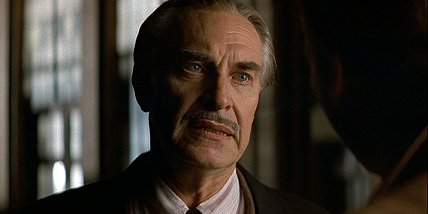Lighting
Small light

Small lights are lights that cast intense, heavy shadows. This type of light usually requires softening through the use of a diffuser, or filling (reducing the shadows) with a second light or reflector.
Big light

Big lights give even lighting with softer shadows but fail to perform in terms of atmosphere, though it is the easiest to use and works well for shots of a group of people, or a shot that requires detail. An example of this would be a cloudy sky, or perhaps light reflected off of a white wall.
Direction of light

Light from the direct front can be flat and characterless, and may also have the effect of dazzling the people being filmed, although it may be the only option if the cameraman is using a basic camera.

Three-quarter light (light from a 45 degree angle in front of and above the subject) is the usual place to put the main light in traditional lighting setups.

Light from above has the tendency to make the subject's eyes disappear into shadow, which can be good for making a character appear mysterious or moody.

Light from the side can be very atmospheric but is much harder to work with. This can create a moody low-key effect and can require exposure compensation to avoid bright skin tones.

Lighting from directly below the subject can make them appear threatening.
Rim light (light from behind the subject) can be good for creating an atmosphere and works well to make the edges of the subject stand out against the background.
Outdoors
Using daylight can be easiest if the cameraman is filming on a day with fairly even cloud cover, as it allows for him to shoot in any direction and get reasonable shots. Sunlight can be trickier, as it has the tendency to cast quite hard shadows and can dazzle the subject, although it can be effective if used as a rim light. Low sunlight is hard to work with, but provides very atmospheric shots during the "golden hour" just after dawn or before dusk.
Indoors

The light can be boosted from ordinary ceiling lights and table lamps by fitting them with brighter bulbs. Powerful light can be bounced off of reflectors or white surfaces. Chinese paper lanterns with bright bulbs can be good for cheap atmospheric lighting due to the dulling effect of the lantern.
What we will be attempting
We will be primarily focused on big lighting, as we are doing a noir piece, and so the softer shadows provided will be beneficial to the opening. We will be mainly be filming outdoors and so will make use of weather conditions in order to create the desired atmosphere.
No comments:
Post a Comment